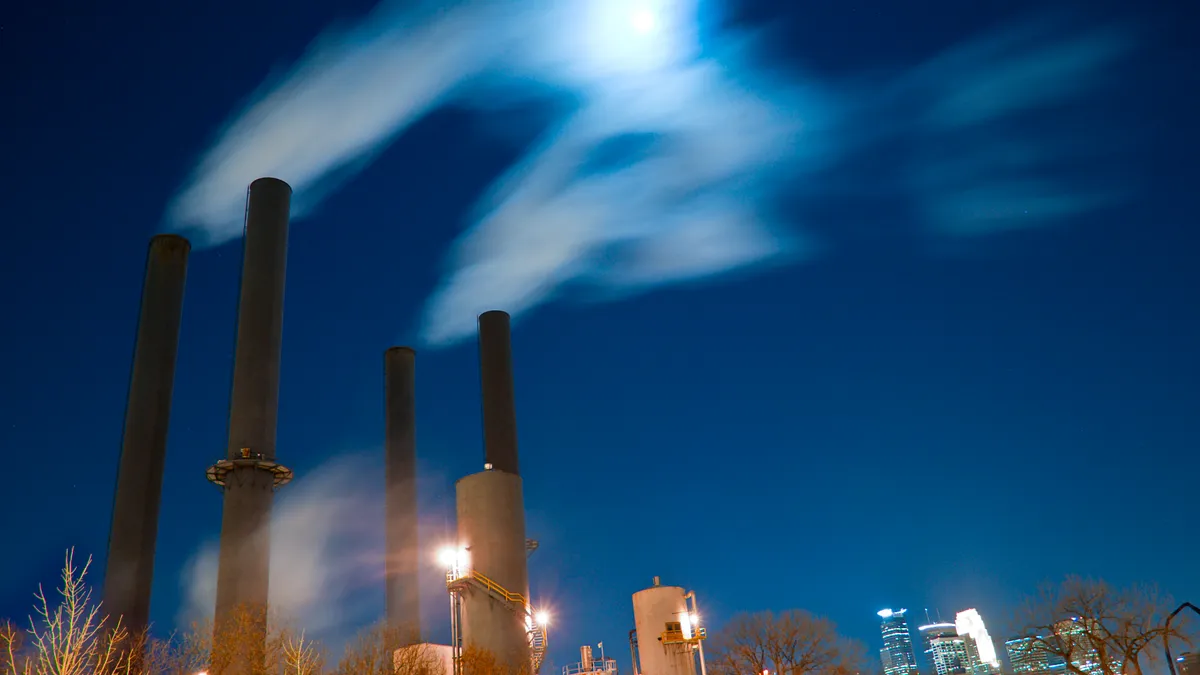Dive Brief:
- The United States continues to add more renewable energy, slash emissions and ramp up productivity, according to a new report from Bloomberg New Energy Finance, which focused on the use of sustainable energy and the country's economic activity.
- The Gross Domestic Product is up 12% since 2007, while energy use is down 3.6%, according to analysis completed by BNEF, showing that
- The report, prepared for the Business Council for Sustainable Energy (BCSE), concludes the ratio of U.S. GDP to energy consumed has grown 16% in the last decade, as the use of renewable power has grown.
Dive Insight:
Major shifts in the United States energy sector, including a long-term push towards decarbonization, are helping to grow the country's economy while creating high-paying jobs, according to new analysis.
Last year "the rapid pace of renewable energy deployment accelerated, consumption and export of domestic natural gas hit record levels, and the economy grew more energy-efficient than ever," the report concluded.
In particular, the energy efficiency measures showed that "The US has truly 'decoupled' economic growth from energy demand."
The United States is "one of the most attractive markets in the world for companies whose operations entail significant energy-related costs," BNEF said. At $0.0691/Kwh, domestic retail power prices are lower than they are in China, India, Mexico, and Japan.
Since 2007, gas’ share of electricity generation increased from 22% to 34%, and renewables' share climbed
from 8% to 15%. Gas and renewables, including hydropower, make up about half the country's generation now. And change is accelerating, the report concludes, as utilities spend more on using less.
Electric utilities spent more than $6 billion on efficiency programs in 2015, while natural gas utilities spent $1.4 billion. Commercial Property Assessed Clean Energy financing topped $45 million in the third quarter of last year, a striking 380% rise over Q3 2015 levels.
Tying energy efficiency loans to repayment via a customer's tax bill is helping to roll out retrofits and improvements homes and businesses. Last year, California lawmakers passed an industry-wide framework for PACE financing loans that aims to educate consumers on terms while helping them reduce utility bills and greenhouse gas emissions.
The increase in efficiency, interest in electric vehicles, cleaner generation and focus on demand management are all having an impact.
"The ascendancy of natural gas, influx of renewables, expansion of combined heat and power and other distributed power sources, adoption of demand-side efficiency technologies, and deployment of advanced vehicles are all contributing to a long-term decline in overall U.S. greenhouse gas emissions," BNEF wrote. Overall greenhouse gas emissions in the U.S. "plunged to a 25-year low in 2016," falling to an estimated 6.5 gigatonnes of carbon dioxide-equivalent.
BNEF estimates power sector carbon emissions in 2016 fell to 1.8 gigatonnes of carbon dioxide-equivalent (GtCO2e) in the United Sates, their lowest annual level since at least 1990 and 24% below 2005 levels.














